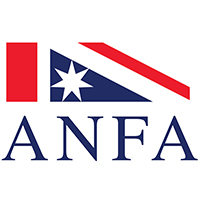Teachers’ Notes
Introduction
Please note that these teachers’ notes have been updated. If you wish to see the current teachers’ notes, please follow this link:
The old teachers’ notes are still provided as an aid, as they may prove to be a useful resource. These are the text version of the teachers’ notes. If you wish to view the graphical edition, please select the links below:
Page 2
Page 3
Page 4
This revised video and notes are for all groups to use. The video is for family viewing, community use and as a valuable teaching resource for the classroom teacher. The video Our National Flag Since 1901 develops an understanding and appreciation of our national flag and its importance in our lives today and to our past. The video examines the historical and cultural significance of the Australian identity.
These teachers’ notes were prepared by Toni Field for accompaniment with the Our National Flag video.
Rationale
Why do we need such a resource? Schools and community groups have always been encouraged to `fly the flag’. This ceremony has been deemed important by Educational and Governmental authorities.
Suggested Outcomes
- Students become aware of the national flag.
- Students experience a sense of national pride and citizenship.
- Students analyse Australia’s diversity and identity and culture.
Teaching Activities
The video can be viewed in total 22 minutes. Students are then asked to discuss, take notes, report, analyse ideas found in the video.
Re run the video. Allow students to find own answers from the discussion points
The Video Covers the Following Areas
- The history of the Australian flag.
- Australian citizenship.
- Government policy in relation to the flag.
- Aboriginal perspectives.
- Australian identity and culture.
Teaching and Learning Unit
Contributing questions:
- How and why do people use flags?
- What types of flags are there?
- How can we use flags?
- Why are flags important?
- Why is the Australian flag important to our history?
Australian Identity and Cultural Diversity Outcomes
Stage 1 CUS1.3 p26 Syllabus
- Identifies customs, practices, symbols, languages and traditions of their family and other families.
- Recognises the importance of flags and other symbols to cultural identity.
Stage 1 CUS1.4 Cultural Diversity
- Communicates an understanding of how people in another country express their culture by mentioning some customs, practices, symbols and traditions.
Stage 2 CUS2.3 p27 Syllabus
- Explains how shared customs, practices, symbols, languages and traditions in communities contribute to Australian and community identities.
- Identifies diverse customs, practices and symbols shared by their local community and all communities within Australia.
- Gathers information about the roles, symbols and practices of some community groups.
Stage 3 CUS3.3
- Describes different cultural influences and their contribution to Australian identities.
- Examines the various regional, State and national symbols and colours that are associated with Australia examines the contributions of Aboriginal people to Australian culture and identity.
Content Syllabus – Teaching Activities
- View the video, report / list how this identity is in evidence.
- Discuss how flags are used to unite / explain / introduce / advertise / inspire an idea.
- Create an idea… allow students to look at various flags and interpret their meaning.
- Allow students to design a flag for an idea.
- Create an ideas booklet, eg, Teamwork for the annual sports carnival, a school’s fundraising activity, Christmas, Birthdays.
- Investigate the National Flag Day .. September 3rd
- Flag day / explore the variety of different flags flown for different reasons
- Flag display day / students create own flags
- Invite experts to talk about community groups / their symbols /coat of arms.
- Research symbols used by different groups.
- Point out the variety of groups to which students can belong to and the symbols and signs, customs and practices that characterise these groups [stage 2].
- Discuss the easily recognisable symbols used by the local community eg shopping centres, RTA signs [stage 2]
- Explore traditions, belief systems and practices of Australians, including celebrations and national symbols (national anthem, national flag, coat of arms) [stage 3]
- Suggest and report how the raising of the flag effects you.
- Write a poem about Ivor.
- Relate the story of the flag competition in diary form.
- Imagine you carried the flag at the Olympic Games, report how you felt.
- Record a friend’s feelings of watching the raising of the flag at ceremonies.
- Describe the first raising of the flag in 1901.
- Video the school’s assemblies, flag raising ceremonies.
- Create a scene from the first Parliament in Melbourne and the flag ceremony
- Design a book cover for the history of the Australian flag.
- Invite a flag manufacturer / designer to speak.
- Organise an excursion to a city and note / draw all flags sighted.
- Research State flags and note who designed them.
- Research the Aboriginal and Torres Straight Islander flags
- Investigate how to dispose of a flag.
- Discuss feelings of emotion, dignity, loyalty, honour, reverence in relation to flags.
- Relate emotions to war veterans, special honour awards, Olympic heroes.
- Research the history of the early British settlers.
- Investigate the Aboriginal perspective of new settlers and the raising of the flag.
- Recognise Aboriginal and Torres Strait flags.
- Examine the understanding why some Australians might not wish to have a flag that includes the Union Jack.
- Research the Australian Citizenship ceremony.
